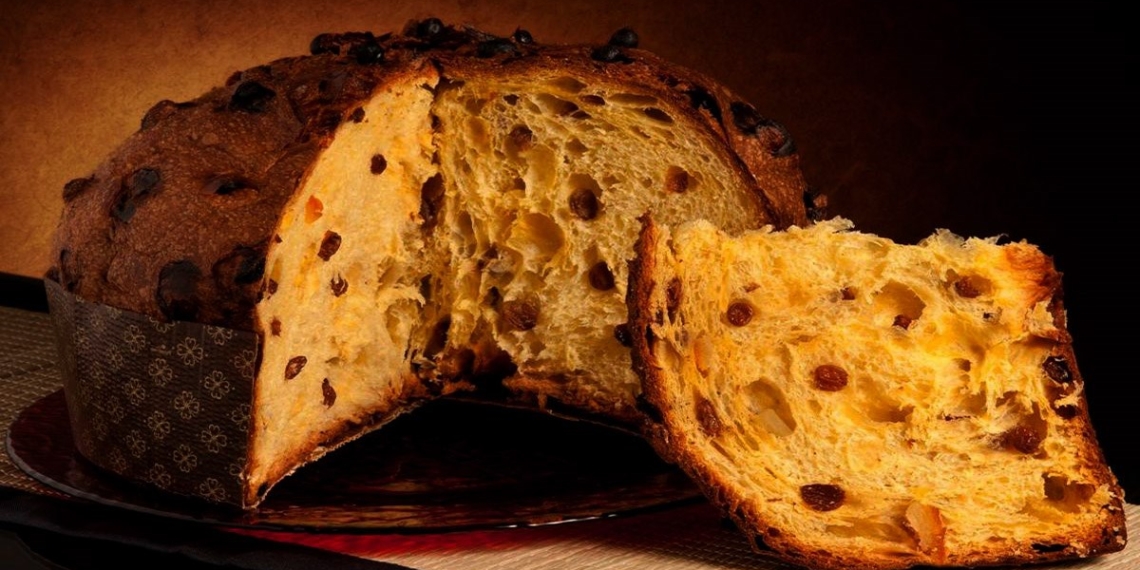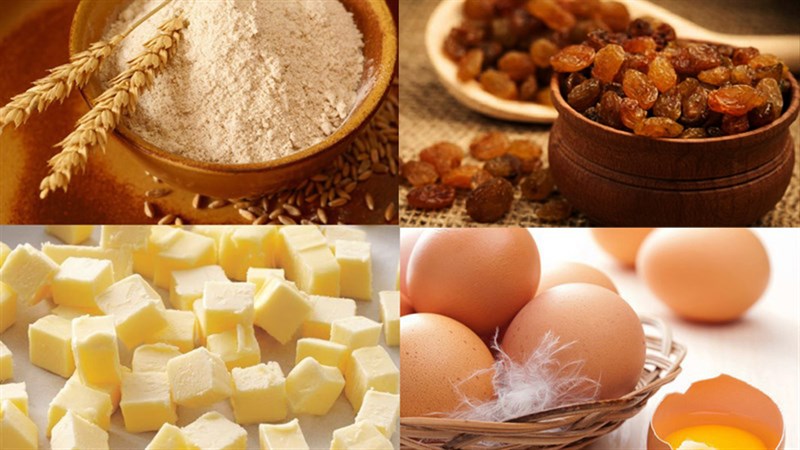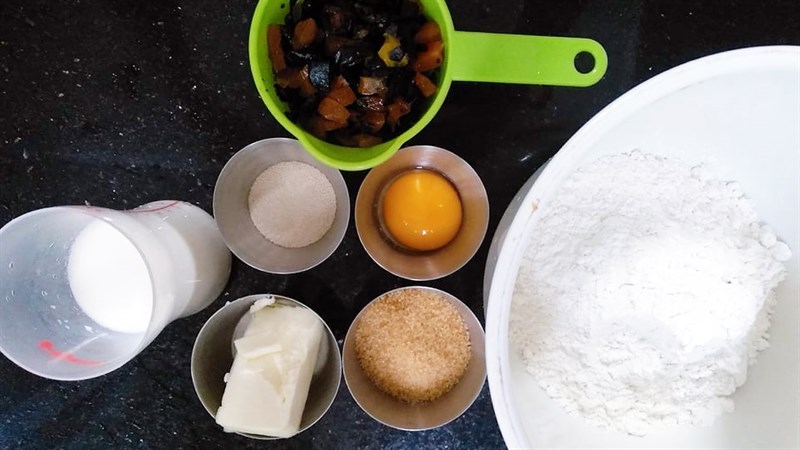Why not try making a new and delicious fruit bread for the family during a leisurely weekend? Let’s join the kitchen with TasteVN to showcase your skills in making this bread with 2 simple recipes right below!
1. Panettone Fruit Bread
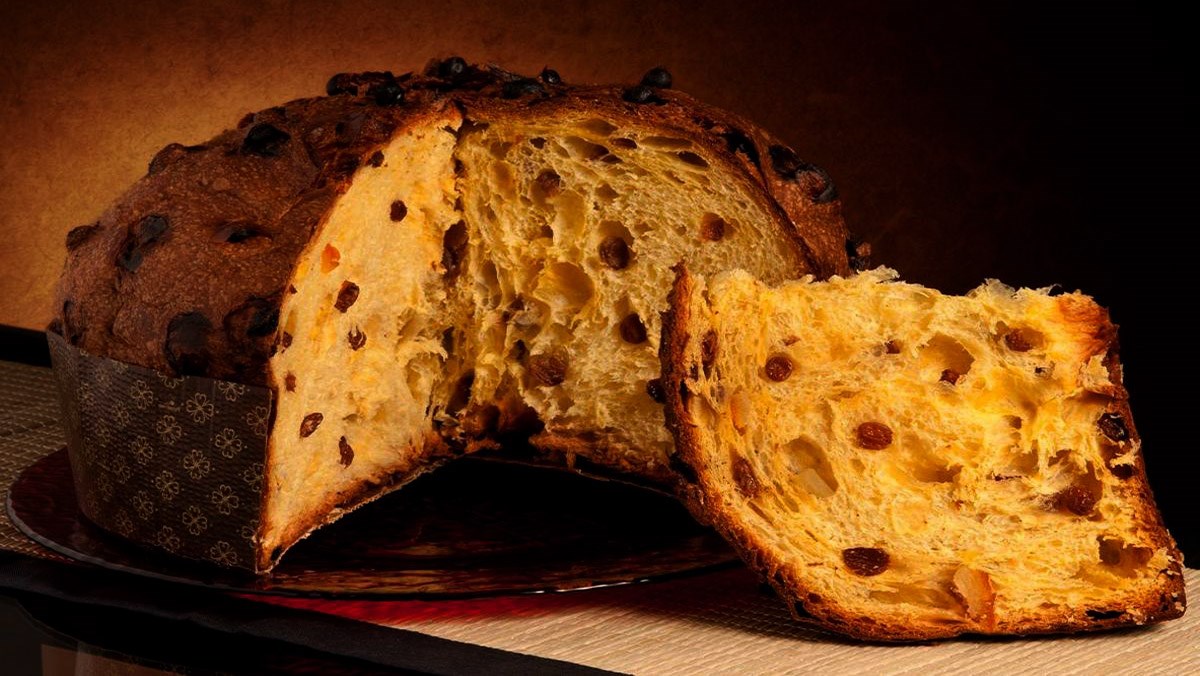
-
Preparation
8 hours 10 minutes
-
Cooking
1 hour
-
Difficulty
Medium
Ingredients for Panettone Fruit Bread Serves 3
Flour 300 gr Yeast 5 gr Fresh milk 120 ml Eggs 3 Unsalted butter 100 gr Oranges 3 Lemons 1 Raisins 300 gr Rum 2 tablespoons Sugar 650 gr Honey 1 tablespoon Lemon juice 1 tablespoon Vanilla extract 2 tablespoons
How to make Fruit Bread Panettone
-
Cook the fruit peel
Cut 2 oranges into quarters, remove the peel, and the orange parts can be saved for dessert. Then slice the orange peel into thin strips, about 1 cm wide.
Boil the orange peel in water for about 3 – 5 minutes, then remove and rinse well with cold water. Repeat this process about 3 times to reduce the bitterness of the orange peel.
Put the orange peel in a pot with 200g of sugar and 250ml of water for 1 hour. After the orange peel is cooked, dry the peel for about 1 hour to make it dry and hard, then dip the orange peel in white sugar.
Tip: To remove pesticide residues on the orange peel, use a little baking soda to scrub evenly on the surface of the orange, soak for 10 minutes in baking soda water, then rinse with clean water.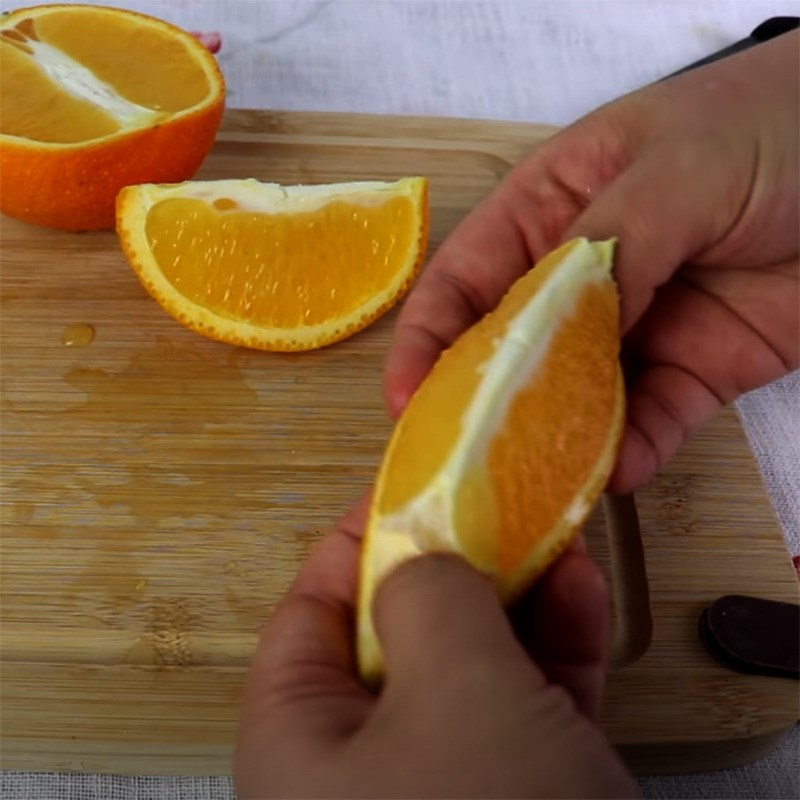
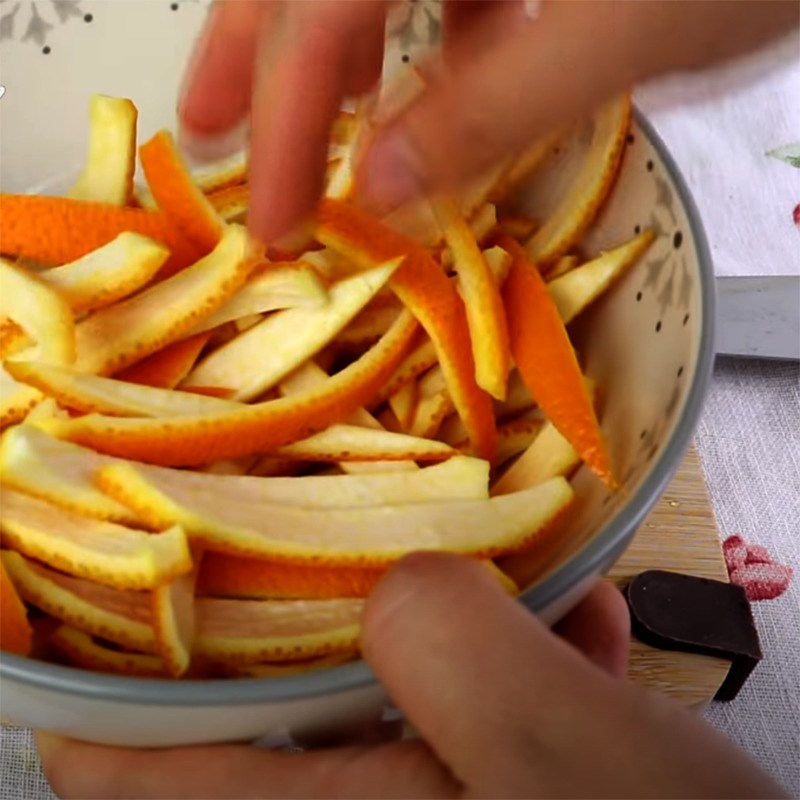

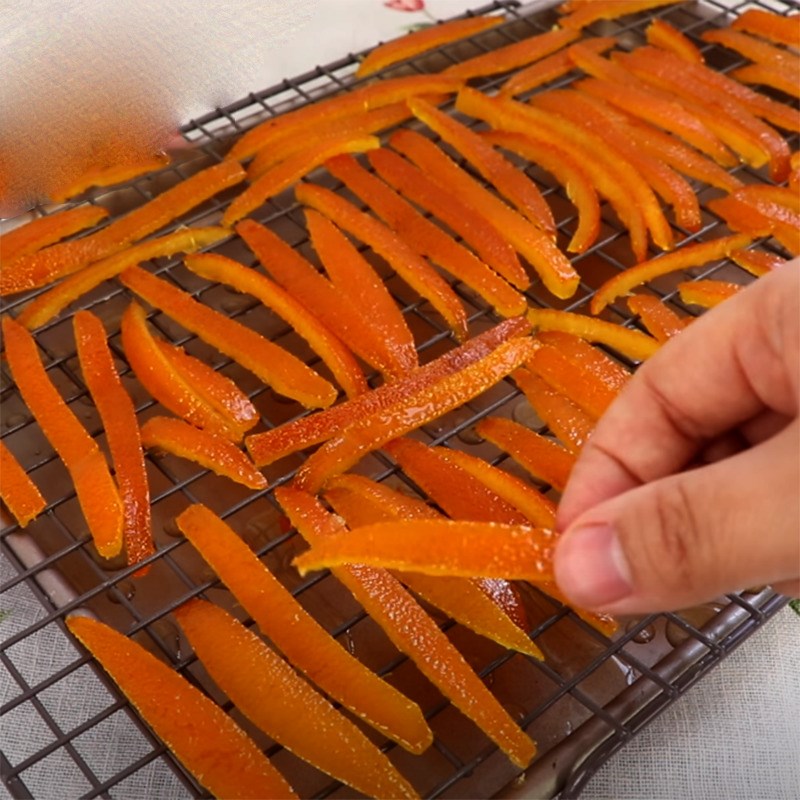
-
Prepare fruit jam
Sun-dry the orange peel for about 8 hours, after making the orange peel jam, cut it into small cubes to use for the cake.
Soak 300g of raisins overnight with 2 tablespoons of Rum to make the raisins plump and softer. Take 1 lemon and 1 orange, zest them and soak with 1 tablespoon of honey at room temperature.
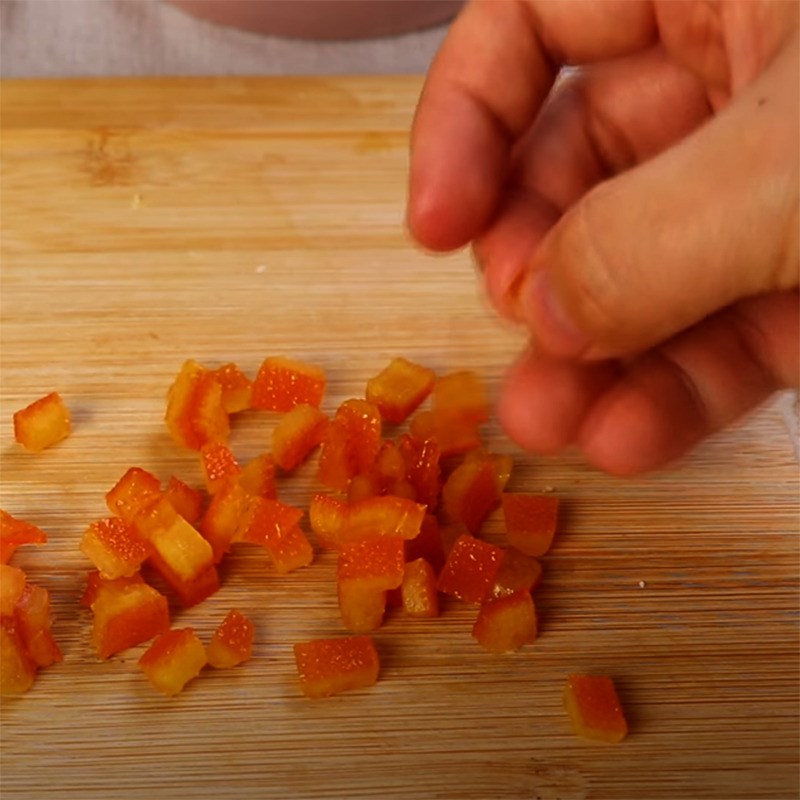
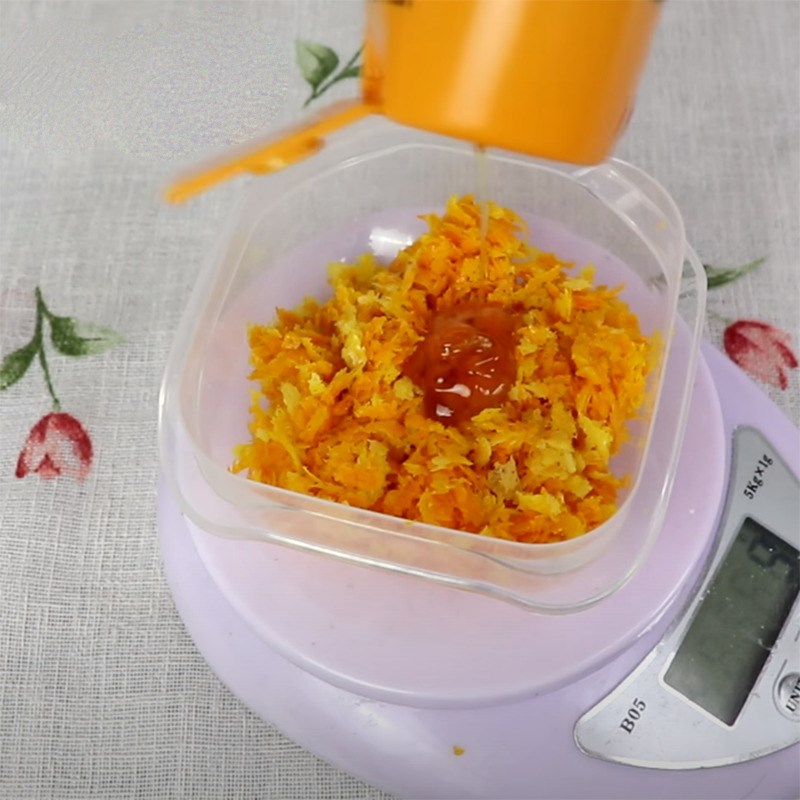
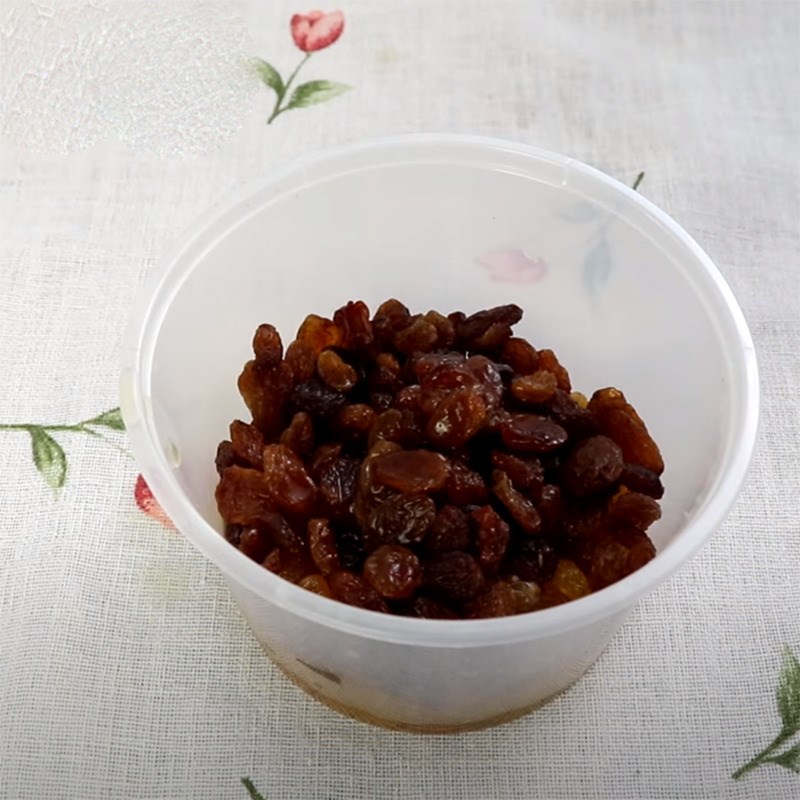
-
Mix the dough
In a large bowl, mix together 300g of flour, 5g of yeast, and 150g of sugar. Then, add 120ml of fresh milk, 1 tablespoon of lemon juice, and 3 eggs into the flour bowl and mix until the dough is smooth (about 5 minutes). Then melt 50g of unsalted butter at room temperature and mix the butter with the dough.
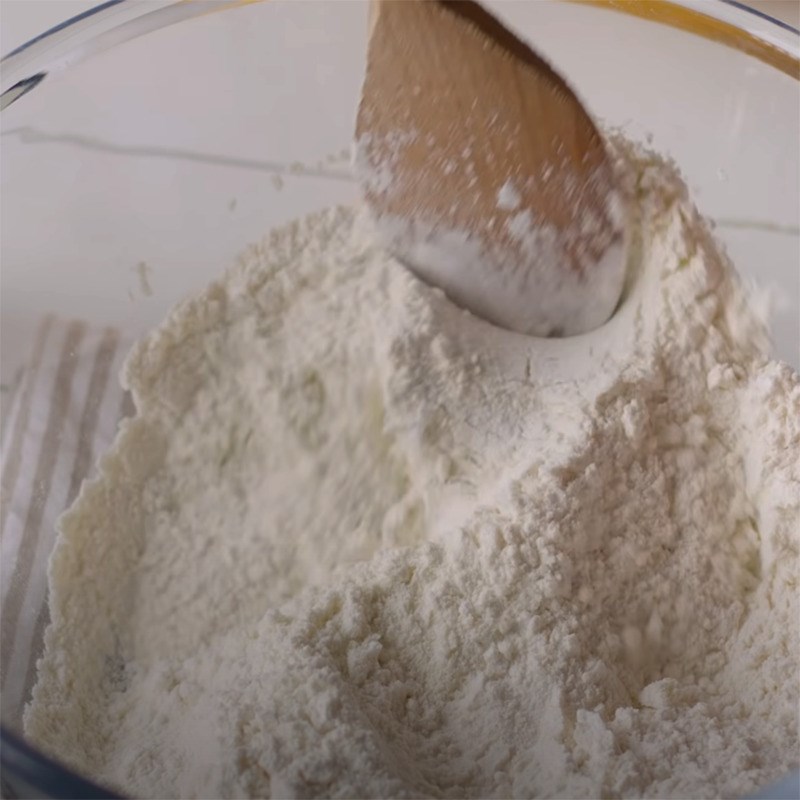
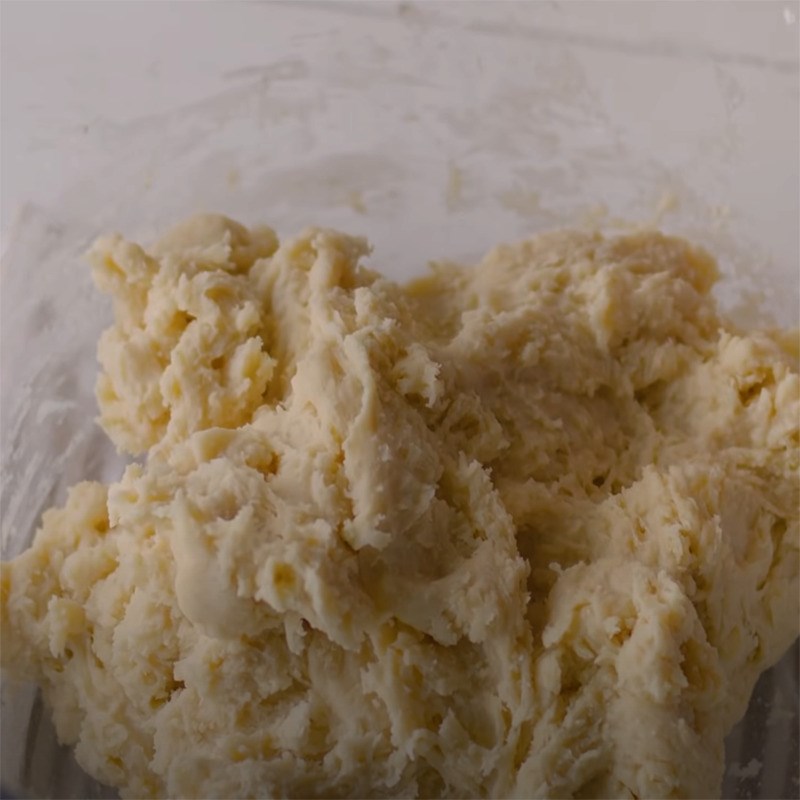
-
Kneading the dough
Use your hands to briefly knead the dough to form a lump, then place the dough on the table and perform the kneading technique called Folding and Stretching.
First, fold the dough over, then use the palm of your hand to press and stretch the dough away. Note that you should press and stretch the dough away, not press down. Next, rotate the lump of dough 90 degrees and repeat the two steps for 2 minutes. Cover the dough and let it rest for 2 minutes.
After 2 minutes of resting, take the dough out and knead for about 1 minute, then cover it again and let it rest for another 2 minutes.
Add 40g of butter to the dough, then repeat the kneading action for another 3 – 4 minutes until the dough forms a uniform, smooth, elastic mass that does not stick to your hands.
How to recognize the dough is satisfactory:- The dough is smooth and elastic with good stretch.
- The dough does not stick to your hands: When pressed, it feels slightly sticky, but when you lift your finger, the dough does not stick.
- You can stretch the dough into a thin sheet without tearing.
- Check the dough with the Windowpane method: tear off a piece of dough, stretch it out. If the dough forms a thin membrane that is not easily torn and light can pass through, it is satisfactory.

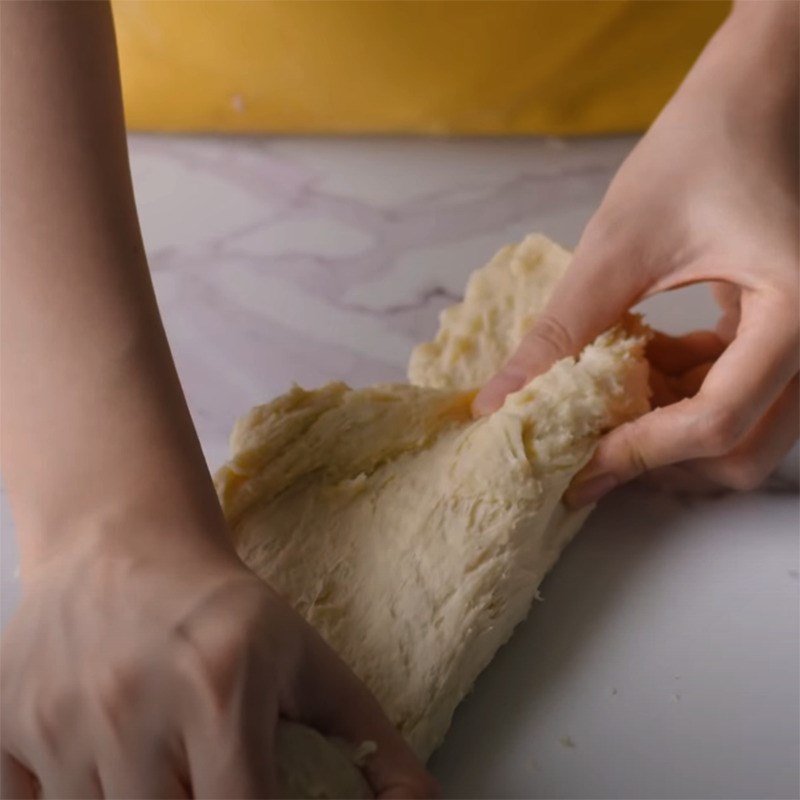
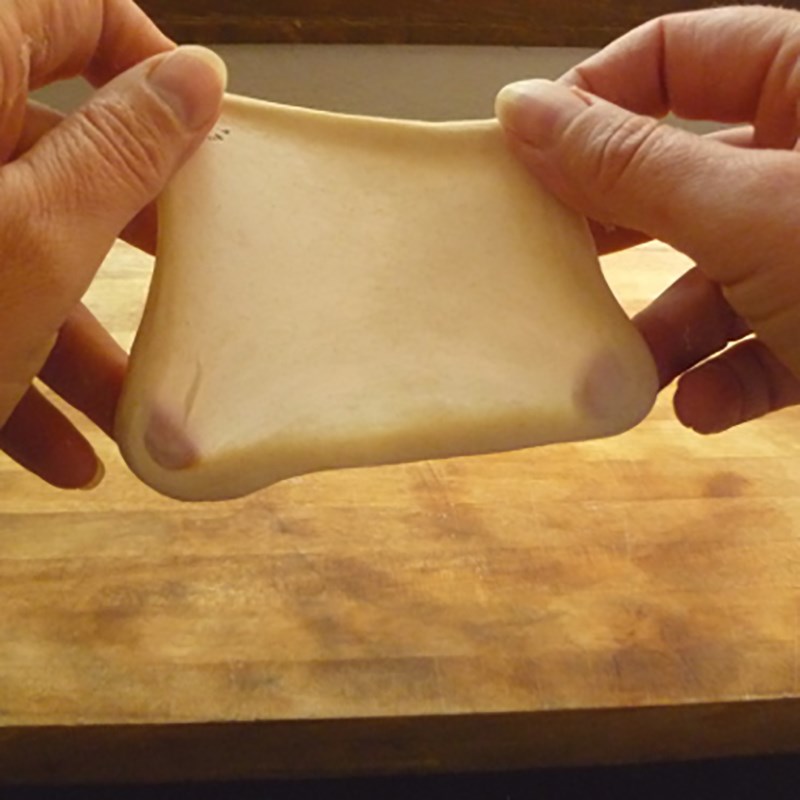
-
Dough Proofing
Place the dough into a greased bowl, cover tightly with plastic wrap, and let it proof at room temperature for 30 – 40 minutes until it doubles in size.
Ideal Proofing Temperature and How to Know When the Dough is Ready- The ideal proofing temperature is usually around 30 degrees Celsius; if it’s lower, the dough will rise slowly, and if higher, it can kill the yeast.
- To check if the dough is properly proofed, press your finger deep into the dough; if the indentation remains, the dough is ready.
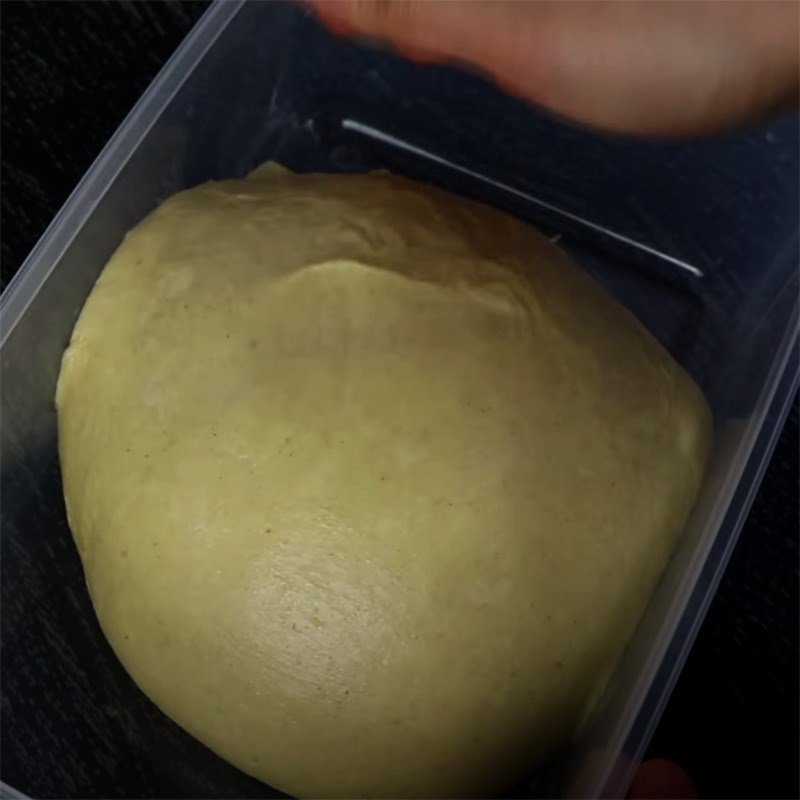
-
Shaping the Bread
Add the raisins, orange peel, and lemon zest to the dough that has just been kneaded smooth, along with 2 tablespoons of vanilla extract. Use your hands or a mixer to combine the mixture evenly. Cover the bowl and let the dough rest for about 2 hours.
Then, divide the dough into 5 equal parts. Shape each part into a round shape and place it into a mold, cover with a cloth, and proof for an additional 40 minutes.
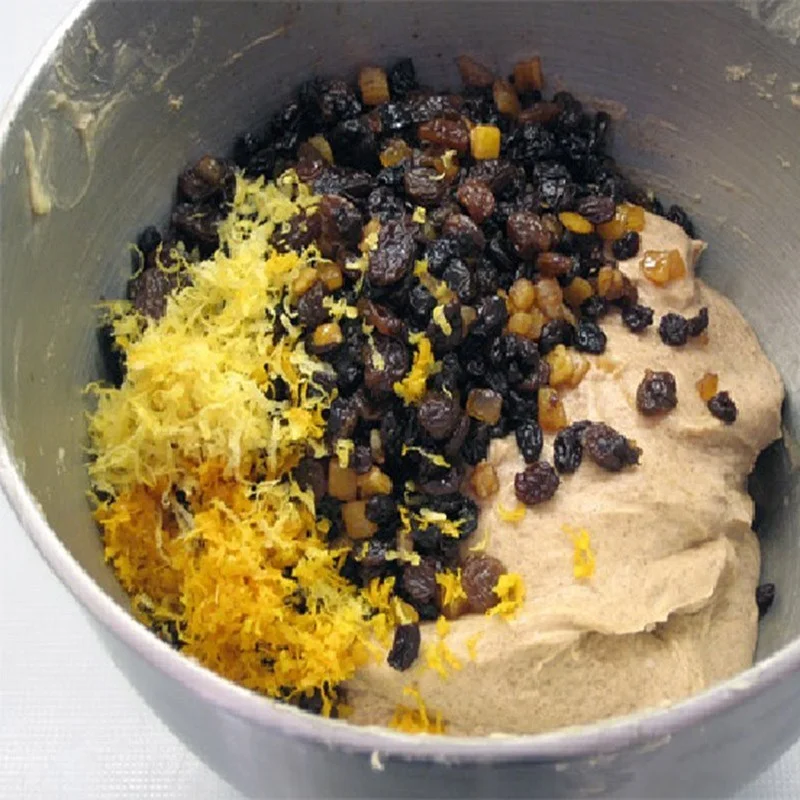
-1.jpg)
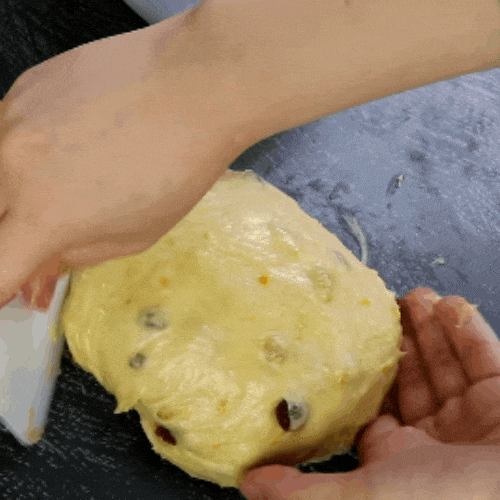
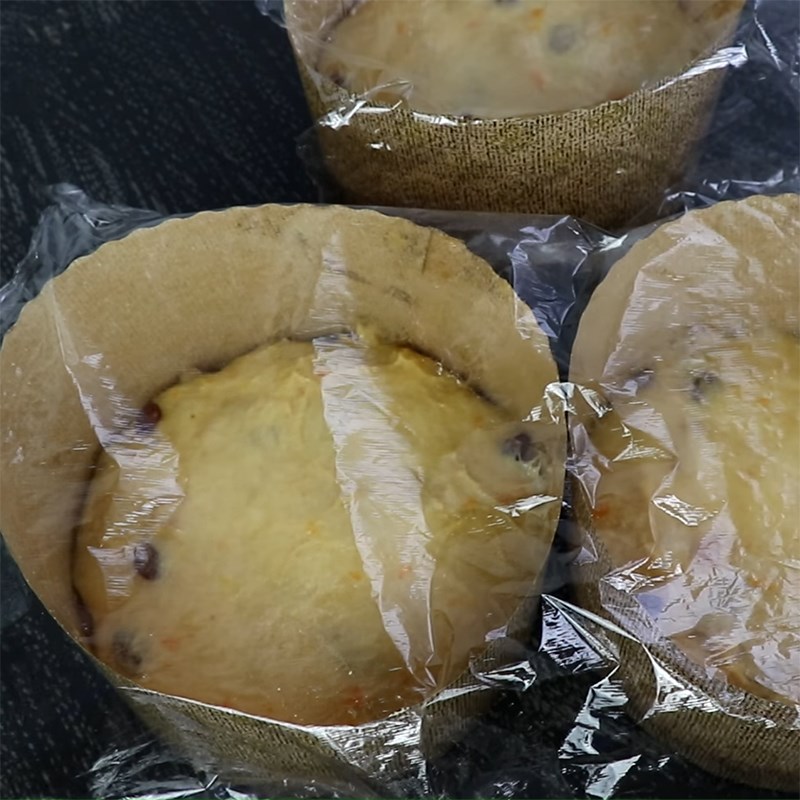
-
Baking the cake
Preheat the oven for at least 20 minutes at 175 degrees Celsius, with both upper and lower heat, no fan.
Before putting the cake in the oven, you can score a cross pattern on the surface of the cake to help it rise higher and better.
Place the cake in the oven at 175 degrees Celsius for 45 – 50 minutes. After the first 15 minutes of baking, cover the cake with aluminum foil to prevent the surface from burning.
When the baking is done, take the cake out and insert a bamboo stick into the bottom of the cake, then turn the cake upside down until it cools completely. Hanging the cake like this helps it cool quickly without collapsing.
Tip:- For cakes without toppings, you can add a small piece of butter about 15g in the center if you like.
- Or you can add toppings such as powdered sugar, sliced almonds, pearl sugar,… on top of the cake to make it look better.
- Place the baking tray in the middle rack from 1 – 2 racks because the cake rises very high. After baking for 15 minutes, to prevent the surface from burning, cover the top of the cake with aluminum foil.
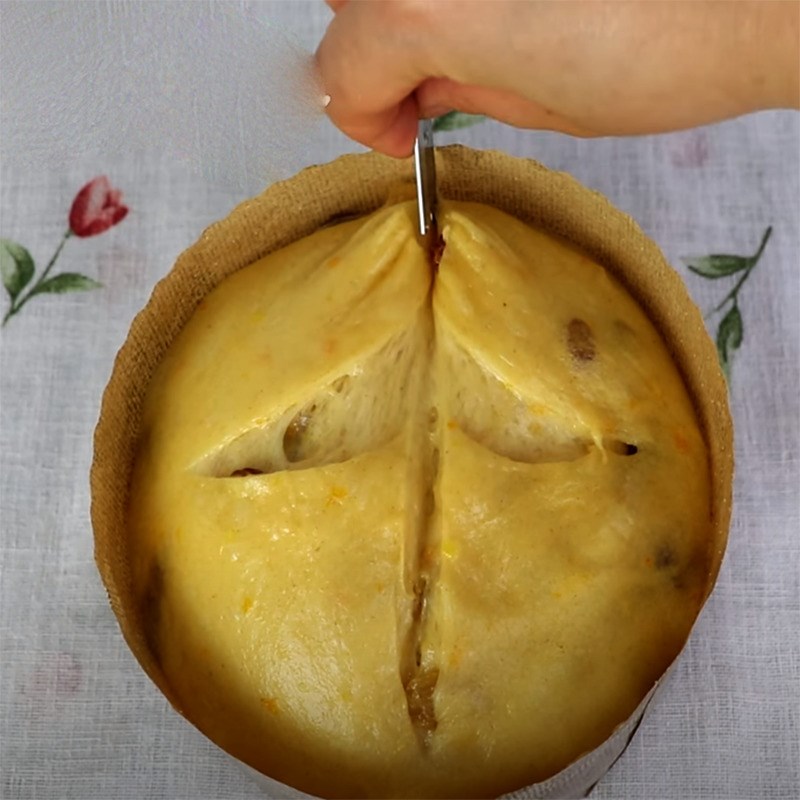


-
Final product
The fruit bread is incredibly fragrant, chewy, and soft with the rich flavors of various fruit jams. This will surely be a meaningful cake to enjoy during this Christmas season.
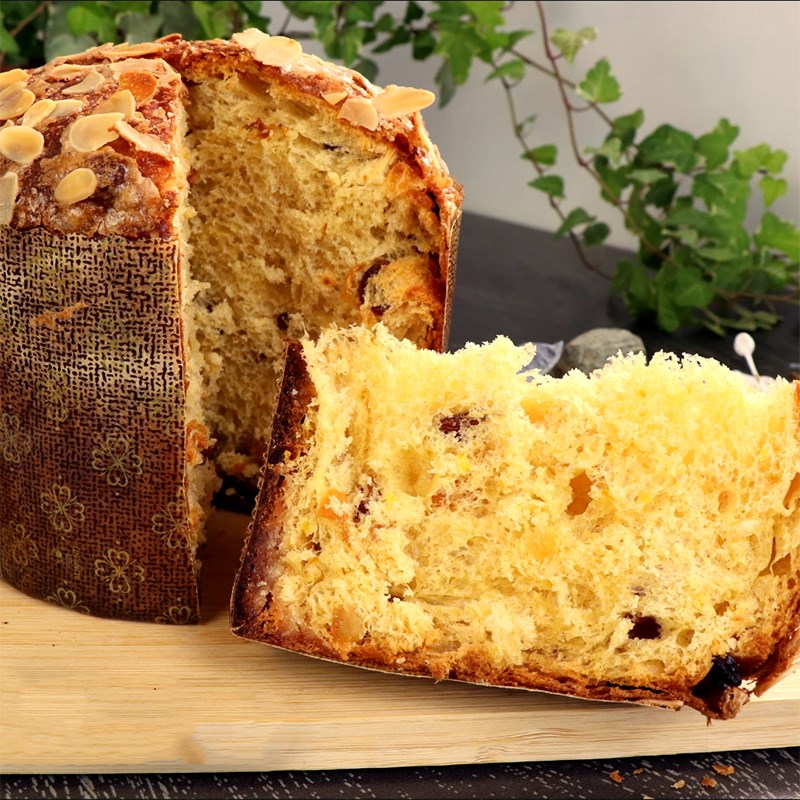
2. Dried Fruit Jam Bread

-
Preparation
2 hours
-
Cooking
30 minutes
-
Difficulty
Medium
Ingredients for Dried Fruit Jam Bread Serves 4
Type 13 flour 200 gr Instant yeast 3 gr Butter 25 gr Dried fruit 70 gr (chopped) Egg yolk 1 piece Unsweetened fresh milk 130 ml Sugar 40 gr Salt a little Cooking oil a little
How to Make Dried Fruit Jam Bread
-
Mixing the Dough
First, put 3gr of instant yeast, 40gr of sugar, 1 egg yolk, and 130ml of unsweetened fresh milk into a bowl, then stir well until dissolved.
Next, take another bowl, then add 200gr of flour, a little salt, and mix well.
Then, pour the milk mixture into the flour bowl and mix until the dough sticks together, cover tightly and let it rest for 10 minutes.
Tip: Separating the ingredients as above is to prevent the yeast from coming into direct contact with the salt. Because that would kill the yeast or weaken its activity.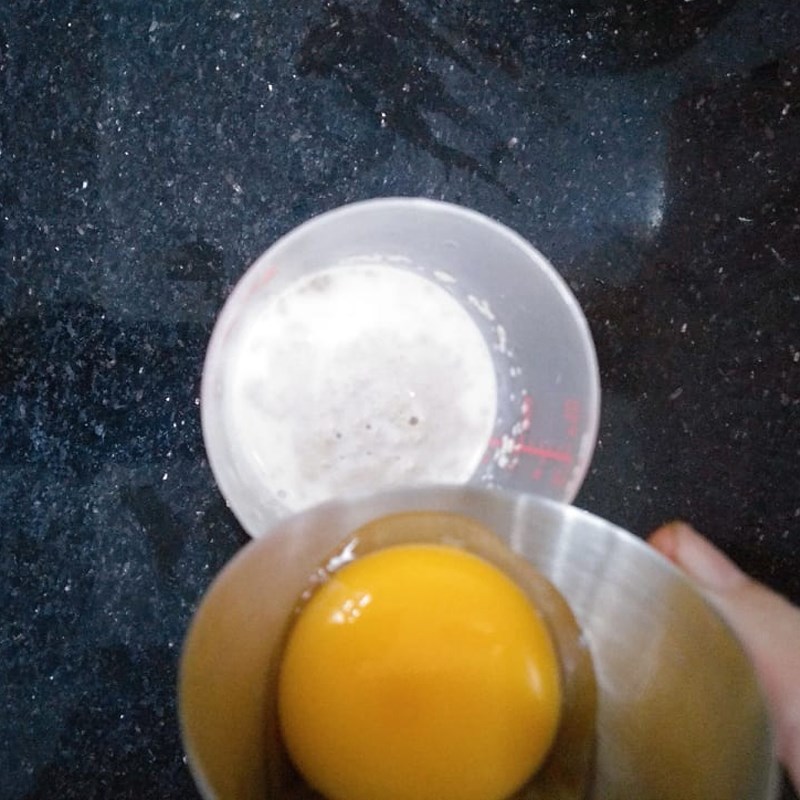
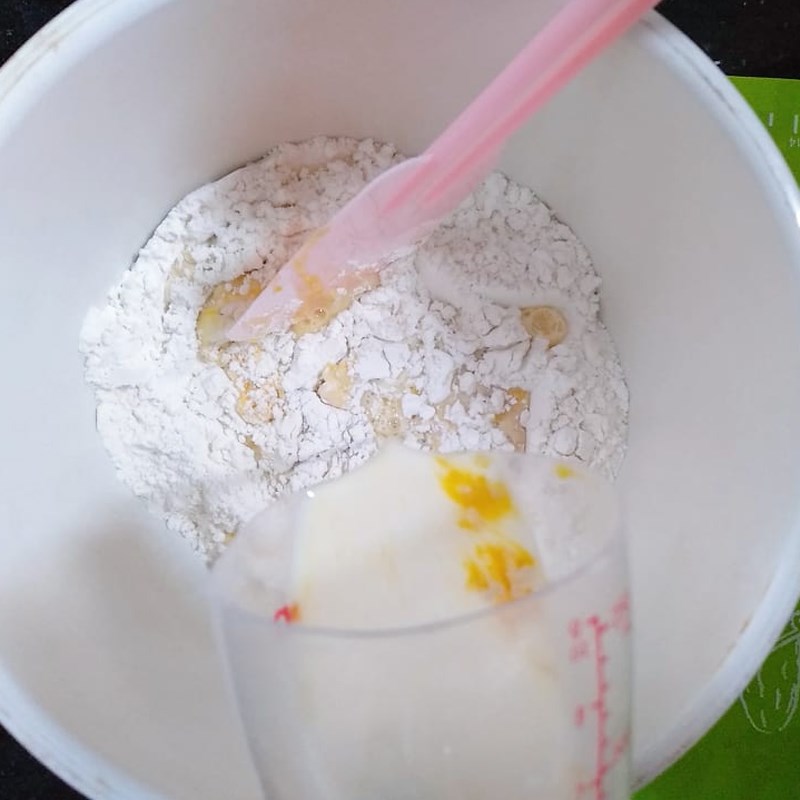
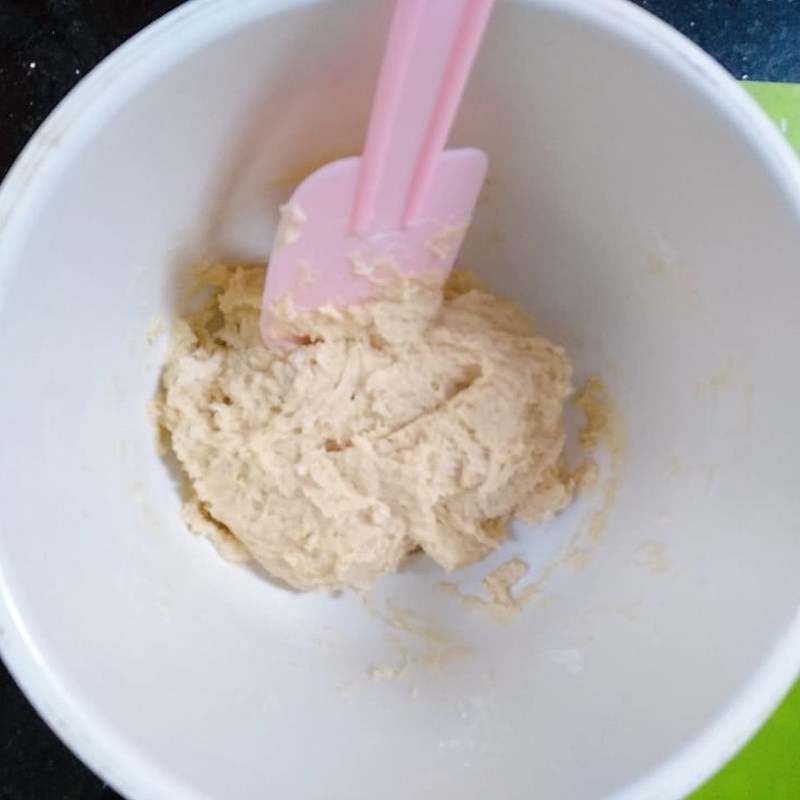
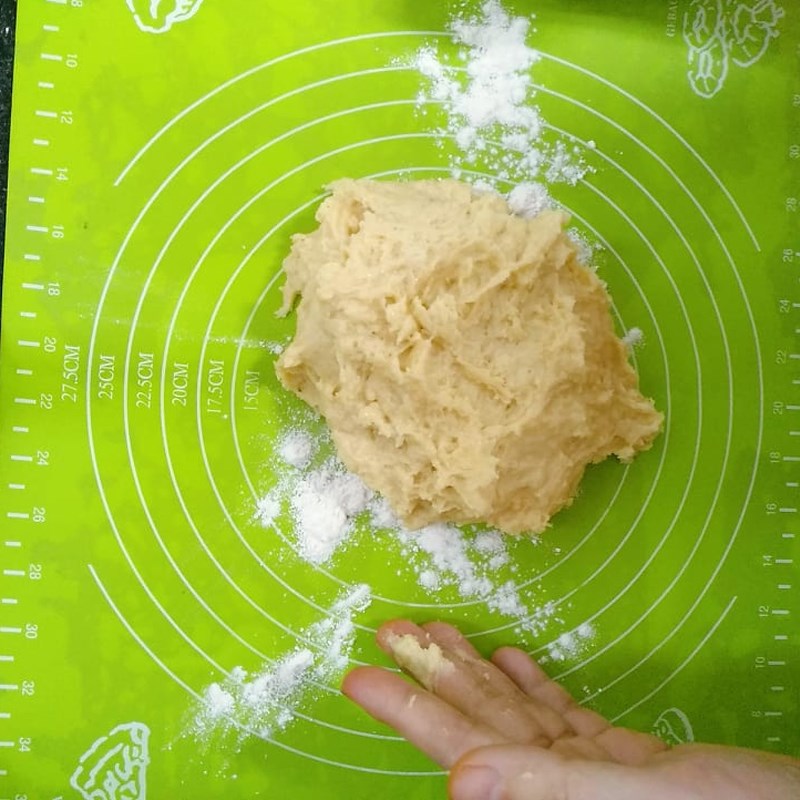
-
Kneading and Proofing the Dough for the First Time
After 10 minutes, place the dough on the table and knead using the Folding and Stretching technique.
First, fold the dough over itself, then use the heel of your hand to press and stretch the dough away. Note that you should press and stretch the dough away rather than pressing down. Next, rotate the dough by 90 degrees and repeat the two steps above for 15 minutes.
When the dough is smooth, add 25g of butter on top of the dough, then continue kneading until the dough forms a ball and does not stick to your hands. Next, place the dough in a bowl and proof for the first time at room temperature for 1 hour and 15 minutes.
How to Know if the Dough is Ready:
- The dough is soft and smooth, with good elasticity.
- The dough does not stick to your hands: When pressed, it feels slightly sticky, but when you lift your finger, the dough does not stick.
- You can stretch the dough into a thin film without tearing.
- Check the dough with the Windowpane test: tear off a piece of dough and stretch it out. If the dough forms a thin film that is not easily torn and light can pass through, it is ready.
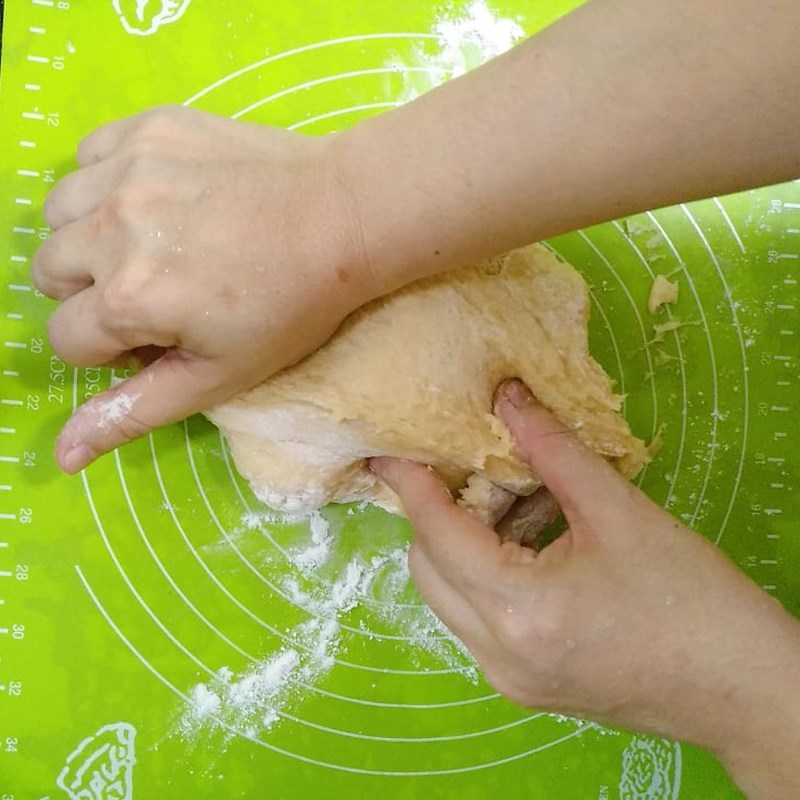
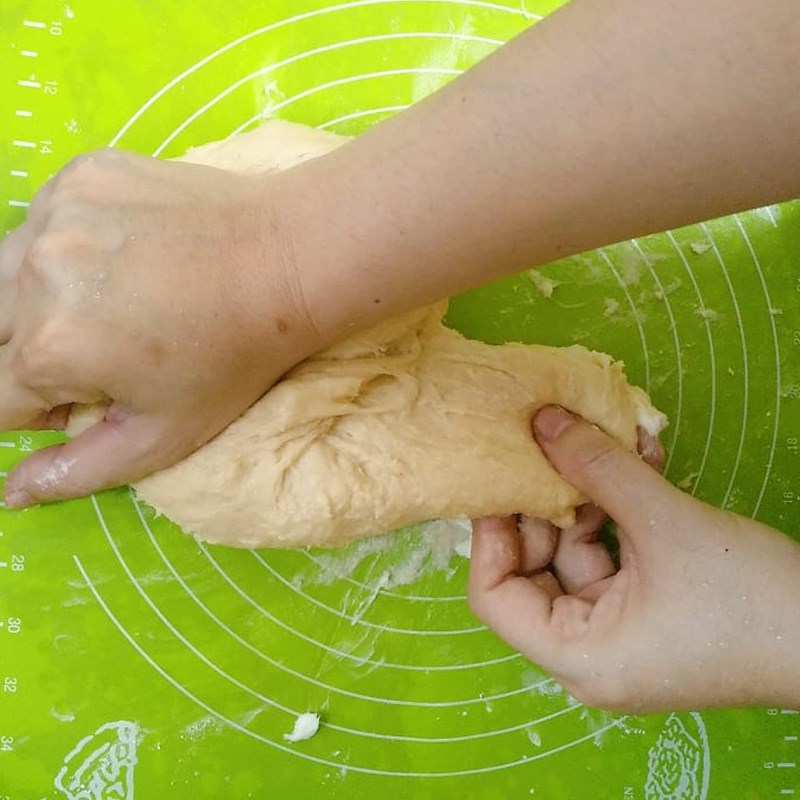
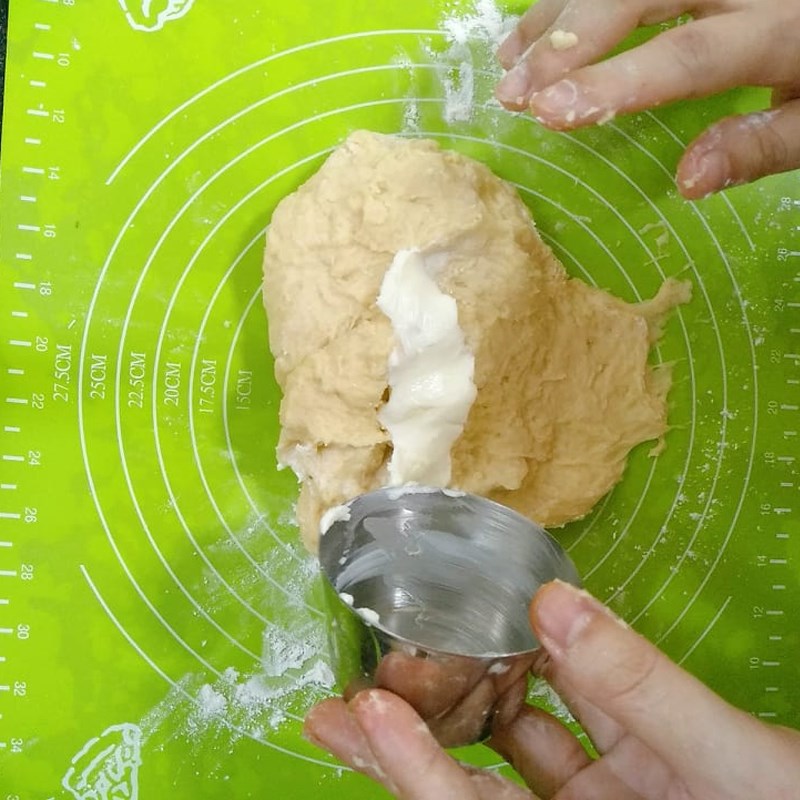
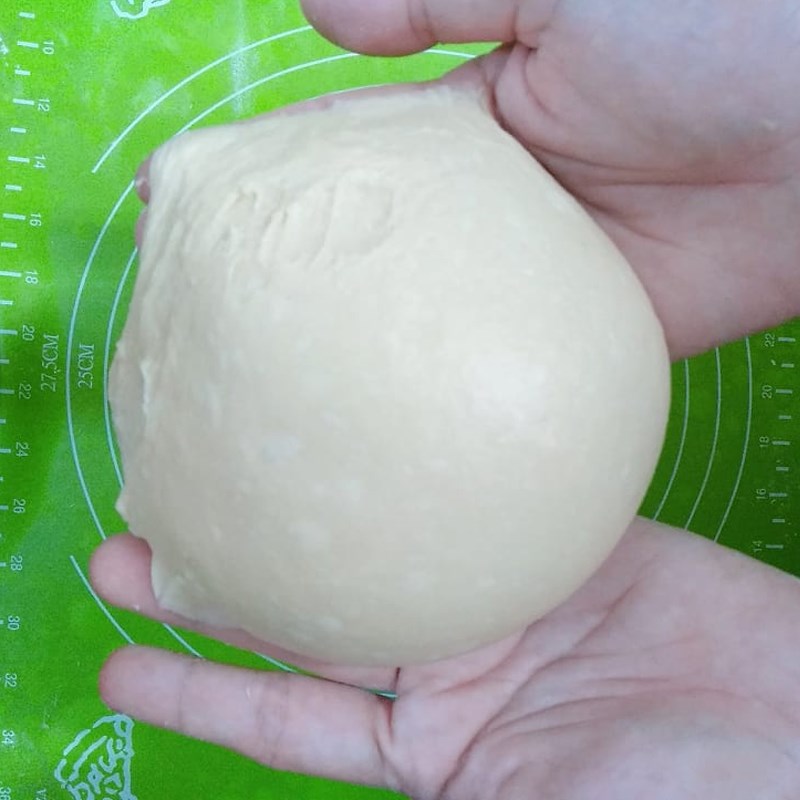
-
Shape the bread and proof the dough for the second time
After the first proofing, take the dough out onto the table and briefly knead it again to push out all the air bubbles. Then, evenly spread 70g of chopped dried fruit on top of the dough and continue kneading to mix the fruit into the dough.
Prepare a round mold lined with parchment paper and brush a little oil on it. Next, divide the dough into 5 equal parts, shape them into balls, and place them in the mold.
Finally, cover the top of the mold tightly with plastic wrap and proof the dough for the second time for an additional 30 minutes.
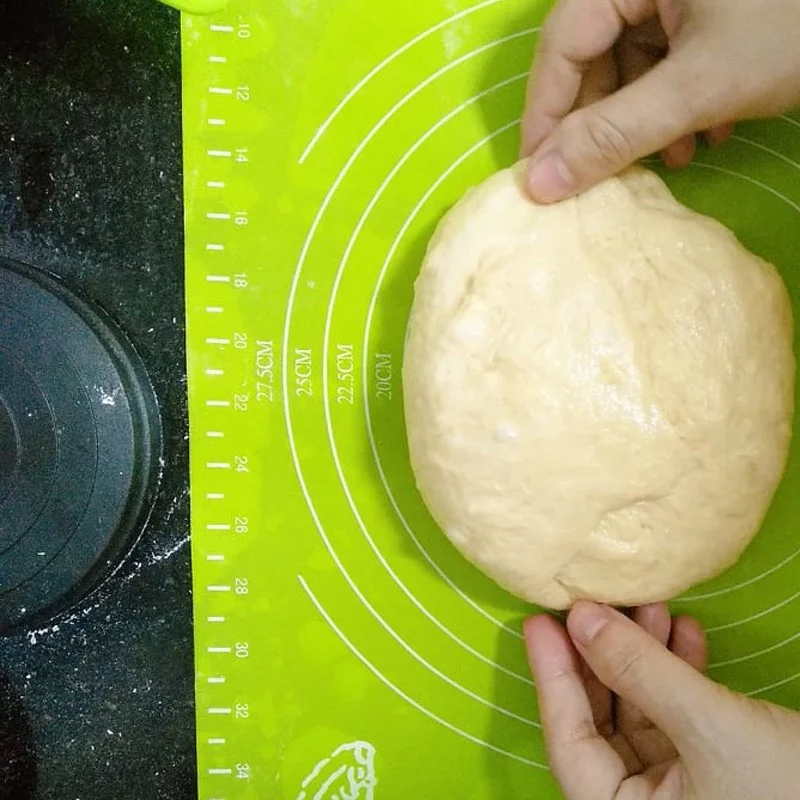
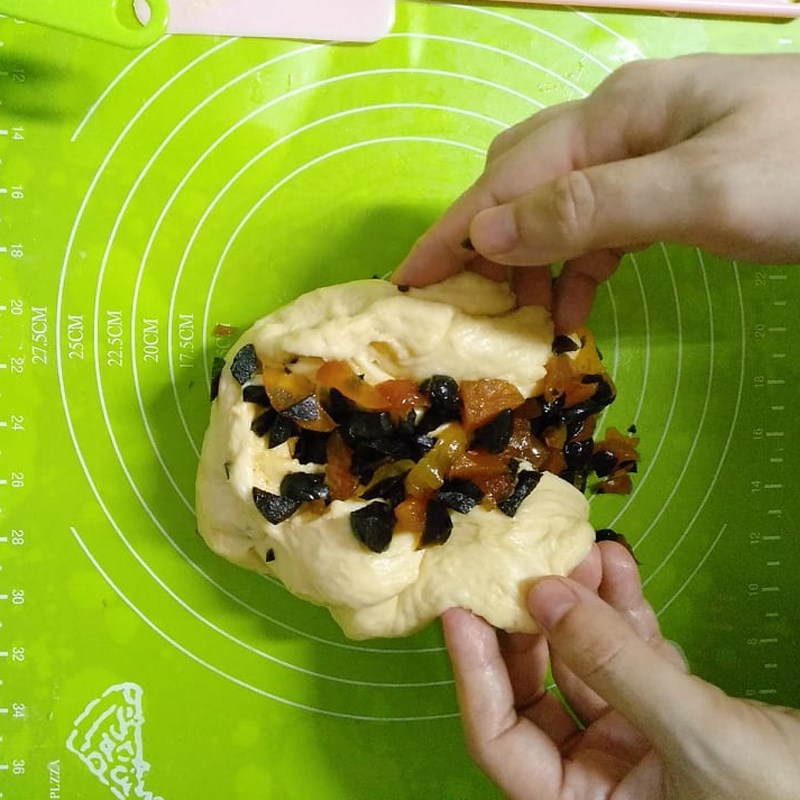

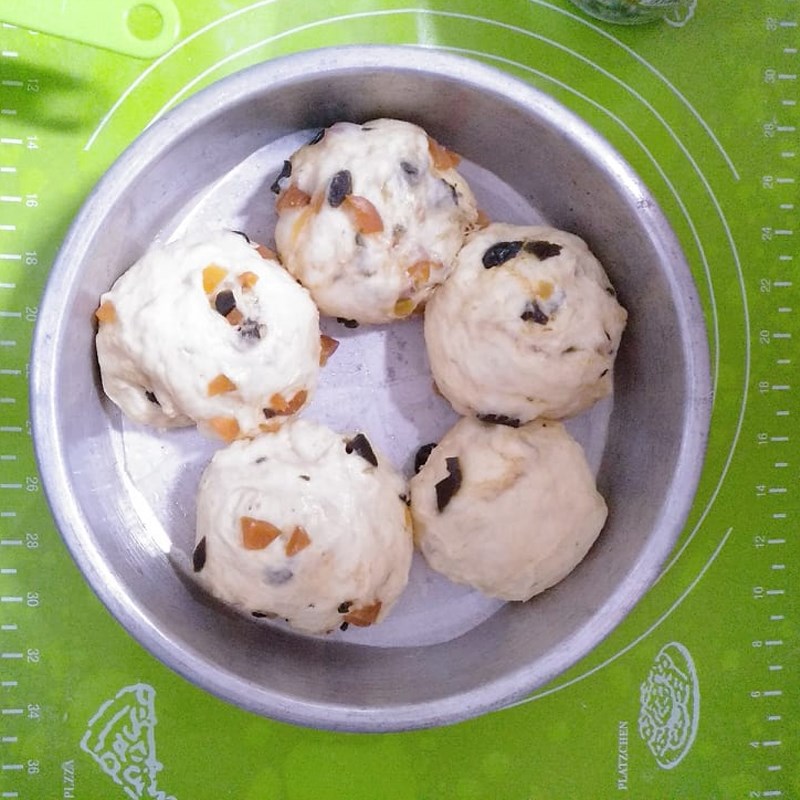
-
Baking the Bread
Preheat the oven to 180 degrees Celsius for 10 minutes. Then, place the proofed dough into the oven and bake at 170 degrees Celsius for 20 – 25 minutes.

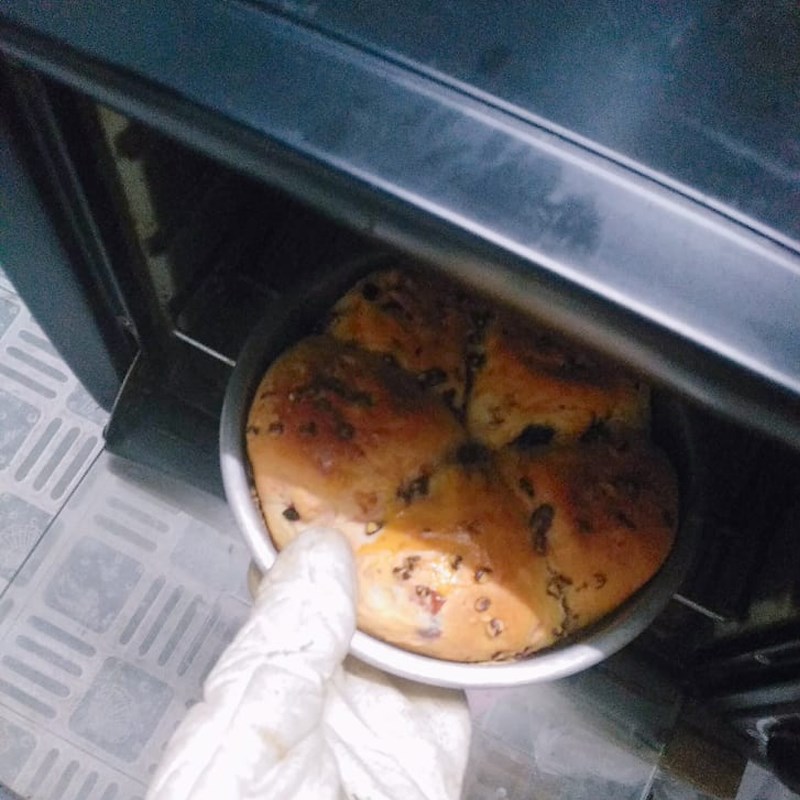
-
Final Product
The fruit bread is fragrant with the smell of butter, has elasticity, and is soft and chewy, extremely appealing. Each slice of bread breaks apart, mixed with dried fruit that is both sweet and slightly sour, ensuring an incredibly enjoyable experience without being overwhelming.
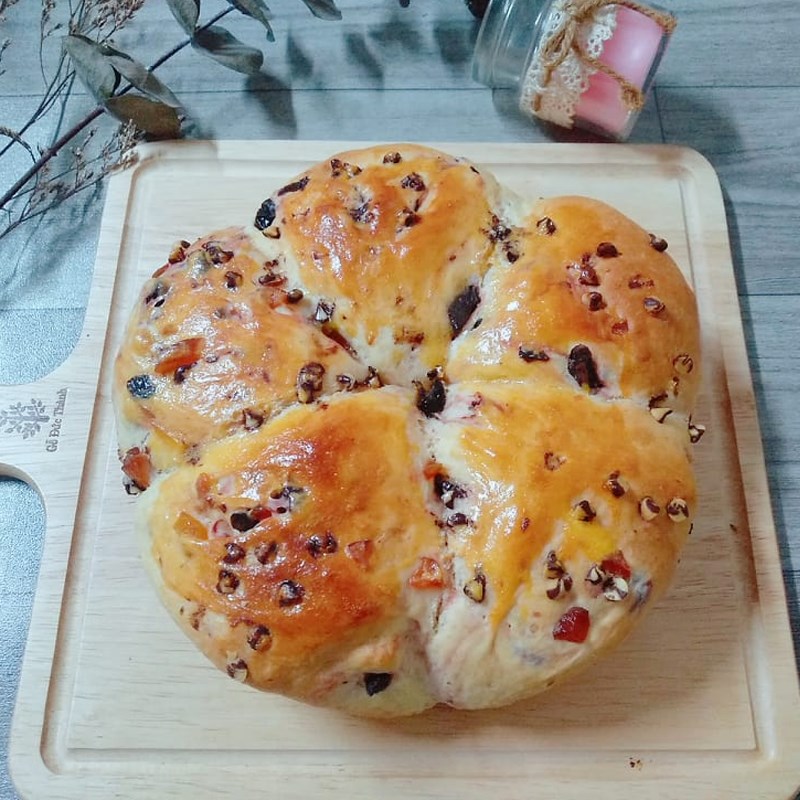
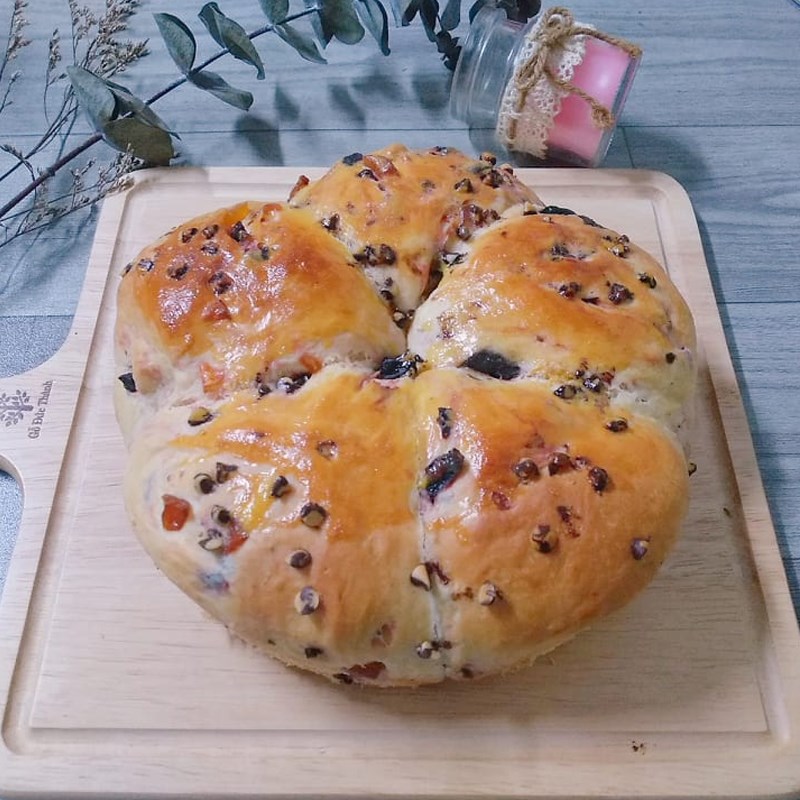


Tips for Successful Execution
- If using instant yeast, it is advisable to use golden instant yeast for rich and sugary bread types.
- Check the expiration date of the yeast before baking; if the yeast is near its expiration date, its activity may be weak, or it may be dead. To check, you can mix a little warm water at about 30 degrees (not exceeding 37 degrees). Add the yeast and wait for about 15 minutes; if the yeast bubbles up like a crab brick, it is still good to use.
- If you don’t have time to bake, you can store the dough after the first rise in the freezer; when baking, just thaw it and let it rise a second time.
- You should weigh the ingredients accurately for the best rise and flavor of the product.
- You can use other types of dried fruits as you like.
- It is important to ensure the oven temperature and baking time as per the suggested recipe for good rising of the bread.
Panettone bread is a delicious, sweet bread that is perfect for you to enjoy in the afternoon with your loved ones. TasteVN wishes you success in making these 2 fruit breads!
